
B2B events are a special way to build professional relationships and meaningful memories. To create a successful B2B event, event planners like you need to create event partnerships to work together for a common goal for attendees and sponsors. Event partnerships are crucial to a successful event.
The more you foster a collaborative culture and embrace event partnerships, the more your event can drive growth. Embracing collaborations maximizes the potential of events, delivering exceptional experiences and achieving desired outcomes.
In this article, we will explore the importance of event partnerships and 25 tips for building successful event partnerships.
What Are Event Partnerships?
Event partnerships are collaborative relationships between an event organizer and other entities, such as sponsors, vendors, speakers, or media outlets, for a common objective. These partnerships can be about lending expertise on niche topics, providing technical support, assisting in catering, venue services, or other logistical considerations, to achieve the event’s objectives. The characteristic feature of event partnerships is the mutually beneficial relationship of all parties involved.
For instance, an event partner can be an event sponsor. Having a sponsor as your partner amplifies financial support, in-kind contributions, and resources, which significantly boosts the event’s ability to offer a great experience to the attendees. As an event organizer, you can leverage sponsorship channels to boost brand awareness, promote the event, and get industry recognition. Similarly, your partner, in this case, the event sponsor, will also get commensurate benefits by investing in your event, making it a mutually beneficial relationship.
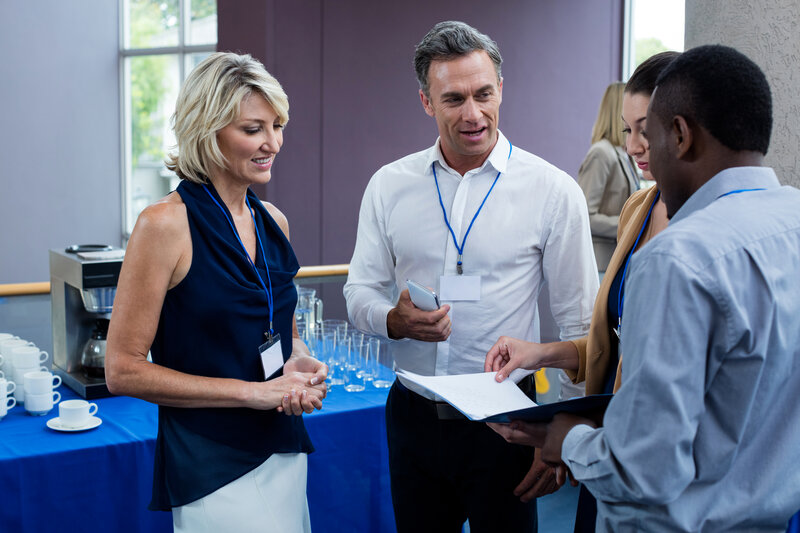
What Are The Benefits of Event Partnerships?
Event partnerships form the core foundation of a B2B event. Event organizers build on this foundation to create highly immersive experiences for their attendees. Here are some benefits of event partnerships:
- Access to expertise and resources: Event partnerships bring the best out of both stakeholders and event organizers. It allows you to upgrade your event by leveraging each other’s resources. For example, a cybersecurity conference partnering with a leading tech firm might gain access to high-profile speakers, technical support, or exclusive tools that enhance the event experience.
- Increase in brand credibility: Partnering with organizations means you share each other’s credibility and reputation. For instance, when the World Future Energy Summit 2025 partnered with Fornnax Technology Private Limited, a shredding and recycling equipment manufacturer, it added significant credibility to the event and the exhibitor.
- Wider audience reach: When both partners are actively promoting the same thing with extra resources, it leads to a wider audience reach. A marketing SaaS company co-hosting a webinar with an influential content creator can instantly benefit from your high-intent attendees.
- Long-term relationship building: Event partnerships foster good working relationships with each other. It allows each party to invest in meaningful professional relationships that last longer. For example, a catering company that has successfully supported a corporate event may be the preferred vendor for future events, fostering a long-term, meaningful relationship.
Simply put, when done right, event partnerships can enhance event visibility, improve audience experience, and provide greater ROI for all the stakeholders involved. To know more about read our blog on “How to Attract the Right Sponsors for Events and Prove Event ROI”
What Are The Types of Event Partnerships?
Event partnerships come in many forms. It depends on your event format and objectives. Let’s look at some of the important types of event partnerships:
- Sponsorship Partnerships: Brands offer financial support for the event in exchange for brand exposure through banners, booths, and speaking engagements.
- Media Partnerships: Collaboration with media outlets, influencers, press, or magazines to promote your event through interviews, coverage, or features
- Content Partnerships: Professional relationships meant for the joint creation of event content like webinars, workshops, presentations, or blog features.
- Technology Partnerships: Involves platforms or agencies that provide event registration systems, event management tools, event applications, live streaming apps, or event analytics.
- Venue Partnerships: Includes partnerships related to event logistics like venue, hotel accommodations, convention centers, co-working spaces, etc.
25 Tips for Building Successful Event Partnerships
We have listed 25 tips to help you enhance your event partnerships and, eventually, your event experience.
1. State Your Event’s Goals and Desired Results
Your goals and desired outcomes for event partnerships should align with your overall business objectives. This alignment ensures that your collaboration contributes effectively to your organization’s success. It will help if you create a roadmap that includes features such as attracting a larger audience, boosting brand visibility, or tapping into new markets.
The goal is to attain a favorable return on investment (ROI) from the event partnerships, which would lead to tangible benefits such as higher revenue, enhanced brand value, increased customer loyalty, or other measurable achievements.
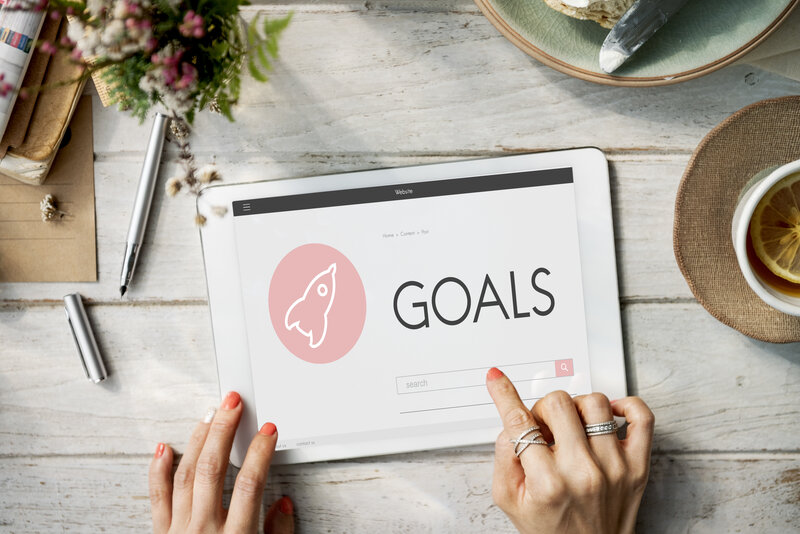
2. Define Clear Metrics for ROI
To truly measure the success of your event partnerships, you need to define specific, quantifiable Return on Investment (ROI) metrics from the beginning. These metrics will allow you to evaluate the effectiveness of your event partnerships and can act as a common language between you and your partner to evaluate the value of the partnership.
ROI for event partnerships must identify what success looks like for your event and your partner. It must include the varying goals of the partnerships and have a metric system for evaluating them accordingly.
ROI metrics can go beyond direct revenue to include brand exposure, lead generation, engagement metrics, content performance, sales uplifts, and audience feedback. For example, imagine a SaaS company sponsoring a major B2B tech summit. While the sponsor might not close direct deals, they still gained hundreds of sales-qualified leads, a 20% spike in their website traffic, and earned valuable brand recognition through co-branded content, speaker sessions, and post-event mentions. This shows how having a specific ROI metric for your event can help quantify benefits from a partnership beyond direct revenue.
Furthermore, you can use tools like UTM tracking, promo codes, QR codes, and analytics dashboards to capture and report these metrics. This can help you create reliable reports that you can showcase to prove the positive ROI of the partnerships, ensuring a greater likelihood of future collaborations.
3. Stay Current with Market Trends
As an event organizer, you need to stay updated with market trends, as it can make you feel relevant, forward-thinking/progressive, and valuable, all the qualities that attract a good event partnership. Partners are more likely to collaborate with someone who embraces modern formats, tools, and strategies to create an event that can get them more value and return on their investment.
An interactive event based on the latest experiential marketing strategies will attract reliable partners who want to collaborate with you. Since these event formats attract high-intent attendees, they bring an immense opportunity for partners who are willing to convert them into leads. To illustrate the point, we can look at the Cisco Live event, where the company created immersive demo zones where attendees can test Cisco’s enterprise solutions in real-time scenarios and share feedback. Attendees could also experience live simulations of network failures to see how Cisco’s systems performed under pressure. Such immersive event formats not only keep attendees engaged but also attract valuable partners.
As such, keep an eye on trends in hybrid and virtual event formats, experiential marketing strategies, sustainability and eco-conscious events, AI-powered personalization, experience-driven designs, gamification, and DEI initiatives. You must regularly read industry reports, attend competitor events, and follow thought leaders. Use this knowledge to tailor partnership offerings like proposing eco-friendly sponsorships or AR-integrated booths, to show that you understand the current landscape and are future-ready.
For more information on experiential events, read this article, “How Experiential Events Drive Higher-Intent Registrations”.
4. Identify Potential Partners
Consider businesses or brands that naturally fit your event’s theme when seeking partnerships for your event. Collaborate with respected influencers, industry experts, or thought leaders to add credibility and draw a larger audience. Partnering with media sponsors, journalists, or bloggers can boost publicity and visibility, expanding the event’s reach. Forge alliances with local businesses to secure event resources and enhance promotion within their networks.
Demonstrate corporate social responsibility by collaborating with non-profit organizations that align with your event’s cause or purpose. Technology companies make valuable partners for event management software, mobile apps, live-streaming services, or virtual event platforms. Establish connections with event venues, hotels, or hospitality providers to secure discounted rates, special packages, or exclusive amenities for attendees. Finally, seek partnerships with event planning agencies, audiovisual companies, caterers, or suppliers who can offer professional services or discounts, contributing to the event’s overall logistics and production.
Tap into networks of universities, colleges, or training institutes for potential attendees or sponsors in relevant fields. Try to reach out to past sponsors, too. Read Everything You Need to Know On How To Get Event Sponsorship. If you are wondering how to write an event sponsorship proposal, refer to this article, A Step-by-Step Guide to Writing an Event Sponsorship Proposal That Gets Results.
You can partner with artists, musicians, entertainers, or performance groups to add excitement and entertainment value to the event. If you are interested in partnering with speakers for your event, you can refer to the Gazebo Speaker’s Directory.
5. Evaluate the Reputation and Compatibility of Potential Partners
As you gear up for event partnerships, begin by listing potential collaborators. Gather insights from colleagues, industry associations, and online directories, drawing from past event experiences. Conduct thorough online research, exploring their websites, profiles, and social media presence to understand their reputation, values, expertise, and past collaborations.
As you gear up for event partnerships, begin by listing potential collaborators. Gather insights from colleagues, industry associations, and online directories, drawing from past event experiences. Conduct thorough online research, exploring their websites, profiles, and social media presence to understand their reputation, values, expertise, and past collaborations.
Evaluate their standing through customer reviews, testimonials, and case studies on online platforms and forums. Look for their participation in industry events and assess their thought leadership. Scrutinize their track record and seek recommendations from trusted sources.
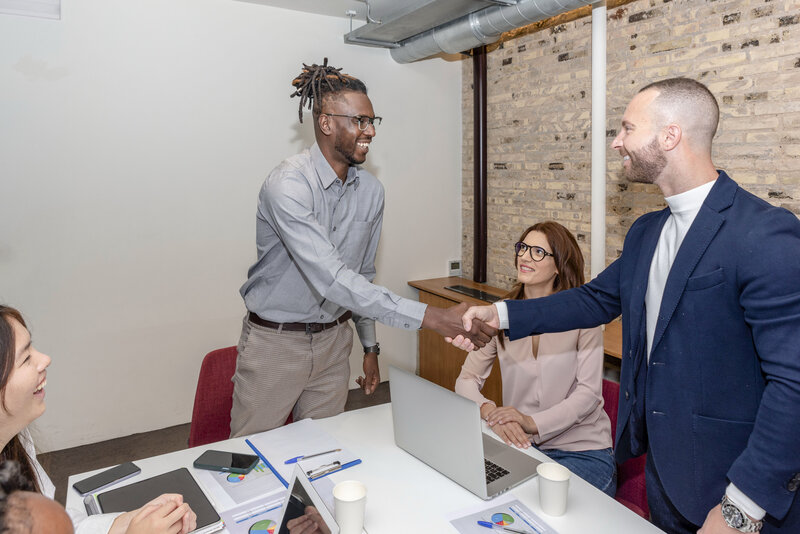
6. Establish Regular Meetings with Partners
Effective meetings promote collaboration, problem-solving, and decision-making, leading to successful event partnerships and outcomes. Regular meetings with event partners help you maintain clear communication channels, track progress, address challenges, and ensure everyone is aligned toward the shared goals of the event.
Establish a clear, consistent meeting schedule in advance, share it with all parties, and ensure they have noted it on their calendars. Decide on the meeting format, whether in-person, via conference calls, video conferences, or online collaboration tools, to best suit your collaboration.
Create structured agendas for each meeting, covering progress updates, upcoming milestones, action items, and addressing challenges or opportunities. Define roles like the facilitator, note-taker, and timekeeper, rotating responsibilities for shared ownership and active engagement among participants.
Promote a culture of open and honest communication during meetings, providing a safe space for members to share updates, raise concerns, offer suggestions, and seek clarifications.
These virtual platform options allow you to meet with your event partner online. At such platforms, encourage active listening and respectful dialogue among all participants. Emphasize the importance of punctuality, preparedness, and focused participation.
Share the minutes after each meeting with all participants to ensure alignment and accountability. Specify responsibilities, deadlines, and expectations for completion, and consistently follow up on action items to track progress and ensure timely completion.
7. Foster Trust and Mutual Understanding with Partners
Trust and mutual understanding are built over time through consistent actions, effective communication, and shared experiences. To lead successful collaborations and event outcomes, you must foster a positive and productive relationship with your event partners.
Plan relationship-building activities outside formal meetings or work-related tasks. Organize social events, team-building activities, or networking opportunities to foster camaraderie and personal connections among the partners.
In all interactions with your event partners, operate with honesty, integrity, and ethical standards. Uphold your commitments, meet deadlines, and fulfill agreements. Consistent ethical behavior builds trust and strengthens event partnerships. Show respect for your event partners’ expertise, contributions, and opinions. Trust and mutual understanding are essential for building strong and successful collaborations.
You can read more about 15 Effective Strategies for Collaborating with Team Members to Foster Relationships with Your Event Partners.
8. Ensure Accountability with a Partner
Establish a culture of accountability with your event partner. Acknowledging and celebrating successes together promotes clarity, transparency, and effective communication, leading to successful partnerships and well-executed events.
Recognize achievements, milestones reached, or goals accomplished. Celebrating successes fosters a positive and motivating environment and reinforces a sense of accountability for future tasks.
Foster open and transparent communication channels with your event partner. Encourage them to share updates, concerns, or potential roadblocks promptly. Maintain clear lines of communication to ensure accountability in addressing any issues or delays.
Keep a written record of all agreements, decisions, and action items. This includes meeting minutes, emails, or shared project management tools. Documentation helps maintain accountability by serving as a reference point and a reminder of commitments made. Accountability with an event partner is essential to maintaining transparency, meeting shared goals, and ensuring the collaboration’s success.
9. Align Event Goals with Partner Objectives
Aligning event goals with event partner objectives is crucial for a successful and mutually beneficial relationship.
Communicate openly and transparently with your event partner throughout the planning and execution phase. Inform them of any updates, changes, or challenges that may impact the alignment of goals. Foster a collaborative environment that encourages ongoing dialogue and feedback. Stay open to adapting and adjusting your event goals and plans based on your event partner’s evolving needs and objectives. Be willing to explore new opportunities or pivot strategies to ensure ongoing alignment throughout the event partnerships.
Create a collaborative plan that outlines the actions, responsibilities, and timelines for achieving the shared goals. Clearly define the contributions and commitments of each party and establish a framework for ongoing collaboration and communication. Schedule regular progress review meetings or check-ins with your event partner.
Use these meetings to assess the progress towards the shared goals, discuss any challenges or adjustments needed, and make necessary course corrections. This alignment strengthens collaboration, enhances outcomes, and maximizes the impact of your event.
10. Make an Agreement or Memorandum of Contract
When crafting an event partnership agreement, begin by acknowledging the involved parties, including their full legal names, addresses, contact information, and pertinent organizational details. Clearly state the event’s name, date, and location within the agreement. Define the objectives and goals of both parties, fostering alignment and a shared understanding of the partnership’s purpose.
Outline each party’s roles and responsibilities, specifying tasks, deliverables, or services they are accountable for during the event.
Specify the duration of the partnership, indicating start and end dates or clarifying if it’s an ongoing arrangement. Include a termination clause detailing conditions, notice periods, and consequences associated with termination. If sensitive information is shared, incorporate a confidentiality clause outlining obligations and consequences for breaching confidentiality.
Address ownership and usage rights of intellectual property related to the event, specifying protection measures and required permissions. Clearly state the governing law and include a dispute resolution clause outlining conflict resolution procedures.
Ensure the agreement encompasses the parties’ complete understanding and supersedes any prior discussions or agreements, written or verbal, relating to the event partnership. Provide space for both parties to sign and date the contract, signifying their acceptance and commitment to the outlined terms and conditions. It’s advisable to seek legal advice to ensure compliance with applicable laws and regulations during the drafting or reviewing.

11. Explore Innovative Ways to Club Resources, Expertise, and Promotional Efforts
The key to successful resource and expertise clubbing is to find synergies between the partners and create a collaborative approach that benefits both parties. It’s essential to be open to creative ideas and explore ways to leverage each other’s strengths to deliver a unique and impactful event experience.
Engage in collaborative content creation by developing joint blog posts, articles, videos, or podcasts that showcase the expertise of both partners, reaching a broader audience with valuable event-themed content. Create co-branded promotional materials, incorporating logos and messaging into social media graphics, email campaigns, and advertisements to maximize brand recognition and expand reach.
Consider joint webinars or workshops, which would offer a platform for both partners to share knowledge, insights, and industry trends with a broader audience. Implement cross-promotional discounts, special packages, or exclusive offers to incentivize customer engagement with both partners.
Explore co-sponsorship opportunities for shared financial or in-kind support, ensuring increased visibility for both organizations. During the event, the host thought leadership panels or sessions featuring representatives from both partners to enhance credibility and industry positioning.
Finally, collaborative networking events should be organized to bring together the networks of both partners.
This post explains that Eventible has announced on its LinkedIn page that Chicago Build Expo is the official media partner. At the same time, Eventible Post promotes the event by offering its followers the opportunity to register.
12. Make Frequent Communication with all Partners
Successful event partnerships thrive on effective communication. Establishing clear lines of communication and maintaining regular contact throughout the event partnerships is essential for maintaining frequent communication with event partners.
As you embark on event partnerships, establish effective communication channels by deciding on preferred modes such as email, phone calls, or video conferences. Develop a shared calendar outlining crucial milestones and regular check-ins to keep everyone on track and communication consistent. Designate specific individuals from each partner organization as primary contact points to streamline communication.
To facilitate collaboration, leverage project management software, instant messaging platforms, and shared document repositories. Proactively contact partners, regularly checking in, sharing updates, and seeking input. Respond promptly to communications, even if you don’t have an immediate answer, acknowledging the message and indicating that you’re actively working on it. In case of challenges or conflicts, address them promptly and professionally, engaging in open discussions and working collaboratively to find resolutions beneficial to all parties involved.
In this LinkedIn post, the market researcher shares glimpses of one of the meetings held between market analysts and regional MICE [Meetings, Incentives, Conferencing, Exhibition] players. The post also includes the link to the premium report, and all the vital players involved are tagged.
13. Encourage Open Dialogue, Feedback, and Idea-sharing among Partners
It would help to cultivate a culture of open communication, feedback, and idea-sharing among your event partners. This collaborative approach will lead to a more innovative and successful event partnership.
Create an environment where partners feel comfortable providing constructive criticism. Emphasize the importance of honest feedback in improving the partnership and event outcomes. Encourage partners to offer suggestions for improvement while maintaining a solution-oriented mindset.
Whenever possible, involve partners in the decision-making process. Seek consensus and build agreements collectively. This collaborative approach generates better ideas and ensures that partners feel invested and engaged in the partnership’s success. It will lead to a more innovative and successful collaboration.
14. Create a Central Communication Platform or Project Management System
Creating a central communication platform or project management system for event partnerships effectively streamlines communication, enhances collaboration, and ensures that all partners have access to important information.
Consider factors such as the number of partners involved, the complexity of the event, and the desired level of interaction and transparency.
Choose any cloud-based tool for communication or a project management platform that aligns with your partnership’s needs.
- Slack,
- Microsoft Teams,
- Asana, Trello, or
- Basecamp.
Evaluate their features, ease of use, scalability, and integration capabilities to make an informed decision. Establish the structure and organization of the platform, such as channels, threads, or project boards.
Invite all relevant partners to join the platform. If needed, offer training or tutorials to ensure everyone is comfortable using it.
Use the platform to share and store critical information related to the event partnerships. It may include project plans, timelines, budgets, marketing materials, event documentation, meeting agendas, and minutes. Ensure that all partners have access to the necessary documents and files.
Utilize the platform to schedule and host regular updates and meetings with partners.
It can include
- Video conferences,
- Voice calls, or
- Chats.
Ensure all partners have access to essential information, leading to a more efficient and productive event partnership.
15. Leverage the Unique Strengths and Resources of Each Partner
Leveraging your event partner’s strengths and resources is a valuable approach to maximizing the potential of your event partnerships. Consider their expertise, experience, network, brand reputation, financial resources, and other assets that can contribute to the event’s success.
Leverage each partner’s marketing channels to help promote the event. Encourage partners to promote the event to their networks, customer base, or followers. Utilize their unique marketing strengths to reach a wider audience and increase event visibility.
You can explore opportunities for collaborative sponsorships or funding. Pooling resources from multiple partners can unlock additional financial support or in-kind contributions that benefit the event. Identify potential areas for joint sponsorship or mutually beneficial fundraising efforts.

16. Distribute Tasks and Responsibilities Based on Individual Expertise
Distributing tasks and responsibilities can leverage the strengths of each partner, increase efficiency, and achieve higher-quality outcomes.
For instance, the event manager oversees the event partnerships and ensures all tasks are completed on time. They coordinate and communicate with all team members, stakeholders, and vendors. They should have excellent organizational and leadership skills. This approach encourages partner ownership and accountability, leading to a successful event partnership.
17. Leverage Technology for Collaboration
Adopting event technology can effectively streamline coordination between event partners, allowing you to save time and improve productivity. By using effective digital tools, you can optimize your event operations and create a more connected, transparent, and efficient work environment. This will prove that you are an effective and reliable partner who is ready to adopt new technology for the betterment of the organization.
You can adopt technologies like project management tools, shared workspaces, real-time communication, collaboration and creative assets, and AI integration. All these tech solutions can enhance clarity, accountability, and innovation, making it easier for your partners to stay engaged and aligned with the shared goal.
For instance, the SaaStr event, one of the biggest Saas events, uses tools like Asana, Slack, and Figma to manage workflows, ensure teams stay connected, and ensure all partners stay aligned to the goal. This highlights the importance of utilizing technology for partnership collaboration.
18. Encourage Cross-Promotion and Joint Marketing Efforts to Maximize Exposure
Leveraging each other’s networks and marketing platforms can increase the reach and impact of your event partnerships.
For a successful event partnership, create impactful co-branded marketing materials such as banners, posters, flyers, or digital assets featuring both partners’ logos, event details, and critical messages. To maximize outreach, collaborate effectively on social media platforms by sharing event updates, speaker announcements, behind-the-scenes content, and exclusive promotions.
Exchange mailing lists with your event partner and send co-branded email newsletters to each other’s subscribers, expanding the reach of your promotional efforts. Further amplify your presence by writing guest blog posts or articles for each other’s websites or industry publications, showcasing the collaborative spirit.
Enhance audience engagement by running joint contests or giveaways with enticing prizes like event tickets, merchandise, or exclusive experiences. Consider creating exclusive discounts or special offers for each other’s customers or new audiences, providing added value and fostering a mutually beneficial partnership. Explore options like discounted tickets, bundled packages, or VIP perks to make the collaboration even more enticing for your shared audience.
In this example, Eventible has shared a countdown post of the HRTech event on their official LinkedIn page. HRtech is a world-leading HRtech community connecting industry executives, entrepreneurs, investors, and professionals. This incentivizes participation and introduces new potential attendees to the event.
19. Collaborate During Event Execution
You can plan to collaborate during event execution, as it will facilitate promotion to both brands. Provide an overview of the event schedule, roles, responsibilities, and any updates or changes. Encourage event participants to ask questions, share concerns, and provide input to ensure everyone is aligned. Encourage cross-functional support and cooperation, where team members can assist and learn from each other to ensure a cohesive and seamless event experience.
20. Maintain Transparency in Event Logistics and Deliverables
Transparency is essential to building trust and fostering strong event partnerships. Maintain open communication, share information, and involve all partners in the logistics and deliverables. It will create a collaborative environment that leads to a successful event.
This can be achieved by sharing all related documents with all partners. These can include event plans, timelines, budgets, vendor contracts, and other relevant documents. By keeping everything in one central location, all partners can stay informed and have visibility into the logistics and deliverables.
Maintain transparency in budgeting by sharing the event budget with all partners. Clearly outline the planned expenses, income sources, and any changes or updates to the budget. Involve all partners in the financial planning process. It will foster trust and ensure that everyone understands the financial aspects of the event.
The Slideshare app allows users to upload presentations, infographics, documents, and videos. Event planners can upload files privately or publicly in PowerPoint, Word, PDF, or OpenDocument format. This way, everyone will be updated and remain in the same loop. It will facilitate making concrete decisions for the betterment of all involved parties.
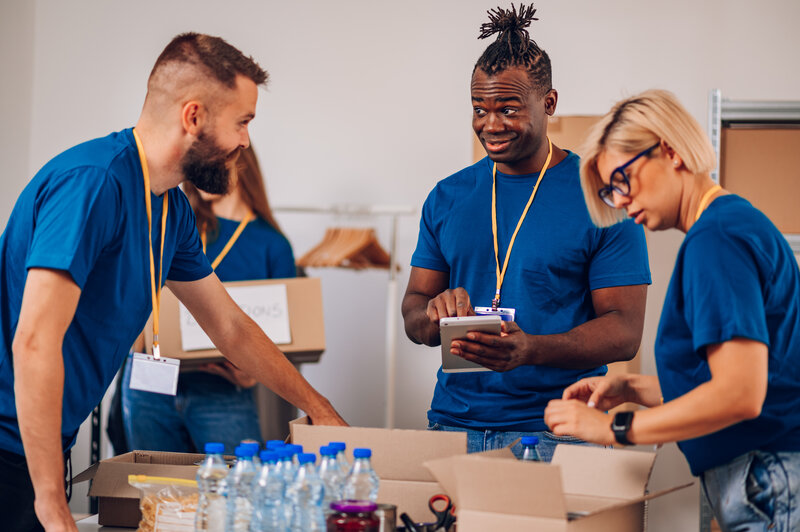
21. Ensure Seamless Coordination
Seamless coordination among event partners contributes to a positive attendee experience. When all elements of an event, such as sessions, networking opportunities, exhibitors, and support services, work in harmony, attendees can navigate the event smoothly. It fosters a positive perception of the event, increases attendee satisfaction, and encourages repeat attendance or positive word-of-mouth referrals.
Events often face unexpected challenges or risks, such as technical issues, vendor problems, or unforeseen changes. When event planners coordinate seamlessly, they can quickly respond to and address these challenges. Coordination enables effective problem-solving, contingency planning, and quick decision-making, minimizing the impact of unforeseen circumstances on the event’s success.
Event organizers collaborate and coordinate to foster a spirit of synergy and innovation. New ideas can emerge, leading to unique event experiences, creative solutions, and fresh approaches by leveraging different partners’ diverse expertise and perspectives. Synergy and innovation enhance the overall quality and appeal of the event.
Seamless coordination among event partners builds trust, strengthens relationships, and fosters long-term partnerships. Successful collaboration in one event often leads to future opportunities for working together. Strong partnerships can lead to shared resources, knowledge exchange, and mutual support, enhancing the success of future events.
22. Conduct a Post-Event Evaluation With Partners
Conducting a post-event evaluation with partners is an important step in gathering feedback, assessing the event’s success, and identifying areas for improvement.
Engaging partners in the post-event evaluation process is valuable for refining future events and strengthening collaborations. Partners provide invaluable feedback on their experiences, pinpointing successful elements and areas for improvement. This input is pivotal for enhancing subsequent events by implementing necessary changes and refining strategies.
Moreover, involving partners in the evaluation fosters trust and solidifies partnerships. Open and constructive discussions demonstrate a commitment to collaboration, laying the groundwork for successful future endeavors. The evaluation process also facilitates knowledge sharing, as partners bring diverse expertise and insights, contributing to continuous improvement and identifying best practices.
The evaluation serves as a performance assessment for the event and its partners. It measures the effectiveness of strategies, goal achievement, and overall success, allowing for the recognition of partners’ contributions and the identification of areas for improvement.
Addressing shortcomings and building on successes leads to higher-quality, more engaging experiences and tremendous overall success in future events. The evaluation process also demonstrates accountability and transparency to partners, reinforcing trust by involving them in the assessment, sharing findings, and discussing action plans. This commitment to openness strengthens partnerships and ensures that partners remain informed and engaged in the event’s outcomes.
23. Incentivize Partners to Promote the Event
To maximize visibility and attendance for your event, you must encourage your partners to actively promote the event by offering them meaningful incentives that align with their interests and goals. These incentives can include exclusive speaker slots, branding opportunities, early access to leads, etc. Incentives not only motivate them to participate in the event, but also make them co-marketers. You can educate the partners about the benefits of promoting your event by showing that any positive results from the promotion can potentially boost their brand recognition.
For an effective incentive to work for your event partners, you need to offer exclusive perks, provide revenue-sharing models, co-branded exposure, gamify promotion, and provide promotional toolkits.
These incentives create a win-win scenario, where your partners benefit from enhanced brand visibility and potential revenue, while your event gets broader reach and strong exposure.
24. Express Gratitude to Partners for Their Contributions
Expressing gratitude is a way to acknowledge and recognize the efforts, dedication, and expertise partners bring to the table. It shows that their contributions are valued and appreciated. Recognition boosts morale and fosters a sense of pride and accomplishment among partners.
Gratitude builds and strengthens partnerships. When partners feel acknowledged and appreciated for their contributions, it fosters a positive and collaborative working relationship. Expressing gratitude enhances trust, loyalty, and mutual respect, creating a solid foundation for future collaborations. It serves as a powerful motivator. When partners are recognized and thanked for their contributions, it instills a sense of pride and motivation to continue performing at their best. Expressing gratitude keeps partners engaged, invested, and enthusiastic about future opportunities and projects.
It has a ripple effect within the partnership network. When partners are acknowledged and thanked, they are more likely to extend gratitude and appreciation to their networks and collaborators. It creates a positive appreciation cycle, strengthening the overall network and fostering a supportive ecosystem.
25. Explore Opportunities for Future Collaborations and Maintain Long-term Relationships
You can cultivate long-term collaborations that benefit all parties by actively exploring opportunities, maintaining open communication, and nurturing relationships with event professionals. It sets the stage for ongoing success, growth, and the creation of a robust network of trusted partners.
Share the feedback and evaluation results from the recent event, emphasizing their contributions and the positive outcomes achieved. Identify potential areas where joint efforts can create mutual benefits and contribute to both parties’ success. Keep partners informed about your organization’s activities, industry updates, and potential collaboration opportunities.
Involve them in brainstorming sessions, strategy discussions, or advisory roles to foster collaboration. Explore co-marketing options, allowing partners to leverage each other’s networks and resources for broader reach. Look for opportunities to collaborate on initiatives such as industry reports, white papers, or speaking engagements. Attend their special events, share their content, and provide referrals when appropriate.
Celebrating successes and milestones with your partners is crucial. Recognize their achievements, publicly acknowledge their contributions, and share success stories to build camaraderie and reinforce the partnership’s value. Regularly assess their value, alignment with your organization’s goals, and potential for further collaboration. When appropriate, discuss the possibility of renewing and extending partnerships to continue the positive momentum in your collaboration efforts.
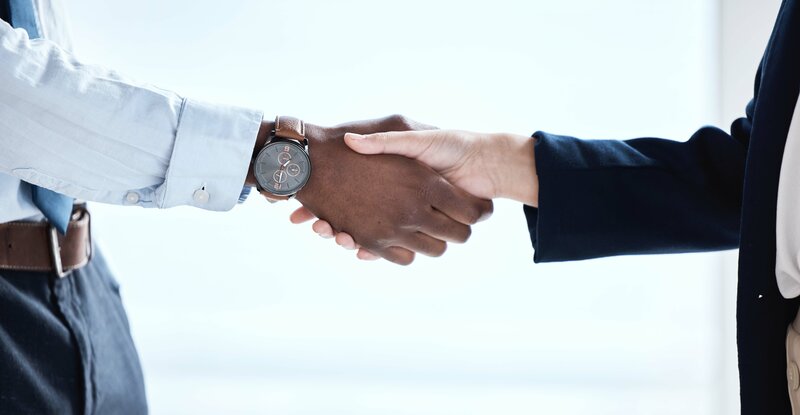
Key Takeaway
This article will help you build successful collaborations leading to extraordinary events. It will help you to foster long-term partnerships and ensure memorable experiences for attendees.
Keep exploring opportunities for innovative collaborations with partners, such as co-marketing initiatives, thought leadership projects, or joint ventures. Embrace creativity and think beyond traditional approaches to deliver extraordinary events.
It’s important to express gratitude and recognize partners’ contributions. Show appreciation for their efforts, acknowledge their expertise, and maintain regular communication to nurture long-term relationships.
It will also help you to identify shared marketing goals and objectives with business partners to align efforts and maximize outcomes. Try to collaborate on projects that bring mutual benefits and contribute to the success of both parties.
If you find this article helpful in the event space, you can visit Eventible for other event-related articles and information. Eventible is a review platform where attendees can leave feedback. This feedback acts as social proof for event organizers and marketers, who can use it to improve their events the following year.




Comments are closed.